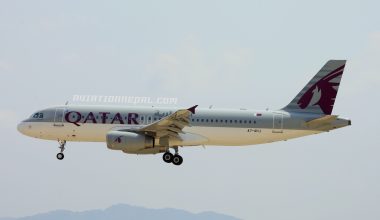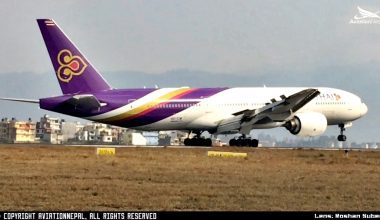Kathmandu — Starting Friday, Tribhuvan International Airport (TIA) has been closed for 10 hours daily over the next five months for a major upgrade, according to the Civil Aviation Authority of Nepal (CAAN). This daily suspension of flights aims to facilitate the expansion work.
CAAN’s Airport Capacity Expansion Project has begun upgrading the airport in three phases: constructing a parallel taxiway on the southwest side, an international apron on the north side, and a hangar apron on the east side. The project is expected to cost around NPR 15 billion and be funded by a loan from the Asian Development Bank.

All flights will be halted from 10 p.m. to 8 a.m. to allow for uninterrupted construction. Dipendra Shrestha, head of CAAN’s Airport Capacity Expansion Project, explained that the upgrades, aligned with TIA’s master plan, will enhance the airport’s runway and taxiway capacity, benefiting air traffic control operations and improving safety standards.
Read More: Yogesh Bhattarai inaugurated all TIA projects
A 75-meter parallel taxiway alongside the main runway is planned, which will significantly simplify air traffic control and management. For safety, CAAN has decided to suspend flights during construction hours. Despite the TIA closure, flights will operate from Gautam Buddha International Airport in Bhairahawa and Pokhara International Airport as alternatives.
Read More: Aviation minister announces plans to upgrade and enhance air service of Janakpur Airport
Bipin Bajracharya, head of the Air Traffic Controllers Association and TIA’s Civil Aviation Office manager, noted that the upgrades would reduce runway occupancy time by one and a half minutes. He added that delays on both the runway and taxiway will be minimized, making it easier for controllers to manage air traffic efficiently.
Despite these operational benefits, airlines have expressed dissatisfaction, as the closure will lead to a 30% reduction in flight schedules. However, CAAN maintains that the infrastructure improvements will ease long-term traffic management and reduce future delays.
The airport improvements are projected to increase runway capacity by 20% to 25%. Although TIA operates from 6 a.m. to 2 a.m., the new repairs will limit its daily operations by 10 hours, starting November 9 and continuing until mid-March.
This upgrade work aligns with International Civil Aviation Organization (ICAO) standards. It will eventually include additional exit taxiways, aprons, and 18 new parking spots, which will help reduce the need for airborne holding patterns for incoming flights.
Seven months ago, CAAN issued an AIP supplement after consulting with airlines, detailing the closure plan to ensure transparency with key stakeholders. TIA’s primary clients—airlines—account for the bulk of its revenue, so the decision to move forward was made with mutual consent among local and international airlines.
In response to the growing passenger numbers, CAAN is also planning further expansions to the terminal building. The existing international terminal will be converted into a domestic terminal, and a new international terminal with a capacity of 10 million passengers per year (3,500 per hour) is also planned.
Construction is scheduled during the dry season to avoid monsoon-related disruptions. Additionally, for the heaviest air traffic, TIA has a unique design for parallel taxiways to accommodate aircraft of various sizes and weights, with deep foundations in sensitive areas to meet ICAO guidelines.
TIA has recently undergone multiple expansions and repairs, including a 3,374-meter runway, five exit taxiways, and 29 apron positions (18 domestic and 11 international). In 2020, runway upgrades led to a 12-hour nightly closure for four months, which affected flight schedules by around 30%, similar to the current plan.






